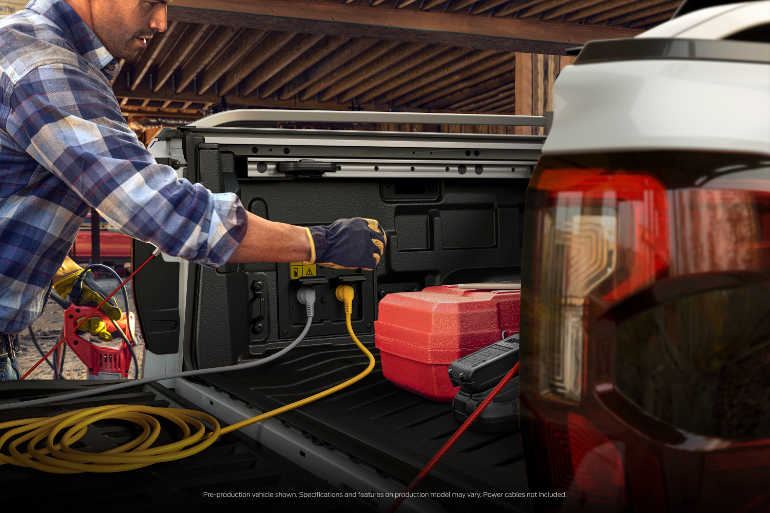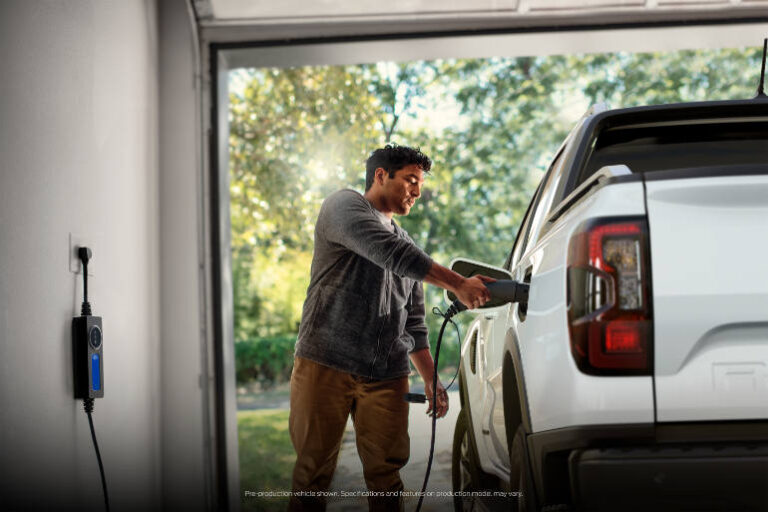Plug-in hybrids (PHEVs) have been available as an option to fleets for a decade, yet despite the obvious benefits of reduced fuel costs and less C02, they’ve haven’t gained a significant share of fleet new car sales. The latest generation of SUV and passenger PHEVs allow you to drive up to 80 kilometres in electric mode which covers the daily travel for most fleet drivers. However, Fleet Managers have struggled with the concept, and the cost.
The new Ford Ranger PHEV, which will be available in early 2025, could be the vehicle that makes PHEVs cool and popular with Fleet Managers.
Available as a dual cab ute with an electric driving range of 45km, the Ford Ranger PHEV makes sense on so make levels for fleets and families that love camping.
Ford haven’t shared detailed specifications at this stage (more information will be available closer to launch), but they confirmed to the Fleet EV News that the payload and towing capability will be the same as the current diesel version.
The ability to use a V2L capability to charge power tools and other equipment from the large battery offers a new opportunity to reduce fleet CO2 emissions. It will remove the need for generators and external power on work sites.

On the weekends, the battery in the Ford Ranger PHEV will be available to power a campsite and take glamping to a new level without the noise and fumes of a small generator.
Family members, and neighbours, of Ranger drivers will rejoice at possibility of silent exits each morning. Using EV Now mode, the Ranger PHEV will quietly ease out of a driveway at 6am allowing everyone to get that extra 10 minutes of sleep.
When designing the specifications of the new Ranger PHEV, Ford used the data coming from existing owners with FordPass Connect to determine that the average distance travelled per day was 40km over three trips. And this is one of the reasons that the battery size allows 45km of electric driving.
Ford customer research also indicated that 86% of Ranger owners regularly tow something. So the PHEV Ranger needed to maintain its towing capability. To maintain the payload and towing weight, Ford has strengthen the chassis and upgraded the suspension to accommodate the increased battery weight. The engineers have also adjusted the steering tune and recalibrated the 2.3L Ecoboost engine to work better with the electric powertrain.
One of the unique features that indicates the global demand for the Ford Ranger, and future Ford PHEV vehicles, is the multiple EV Drive Modes:
- EV Auto (Uses EV first)
- EV Now (100% zero emission motoring)
- EV Later (Keep the charge high for when its needed)
- EV Charge (Focus on charging the battery)
Using the Ford connected services, the Ranger PHEV can be geofenced to apply EV Now mode when entering European cities that only allow zero emission vehicles such as London’s Low Emissions Zone.
Australian fleet and novated lease buyers love dual cab utes which is confirmed each month in the VFACTS results, and the annual survey of popular novated lease vehicles. But will they love a PHEV ute? Ford is betting the answer is YES and believes it will deliver a solution without compromise to loyal fleet buyers looking to reduce their fleet emissions.





